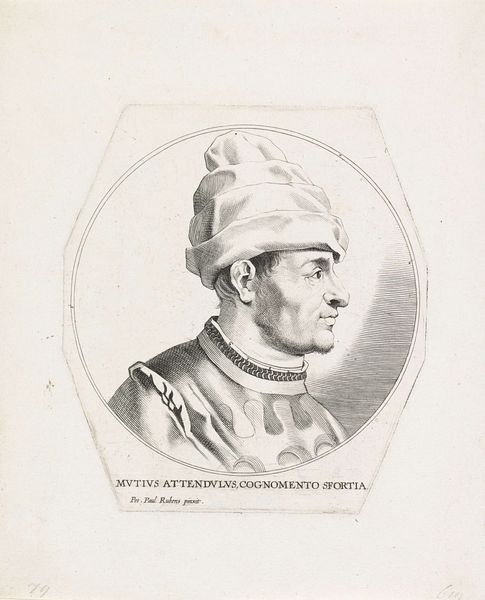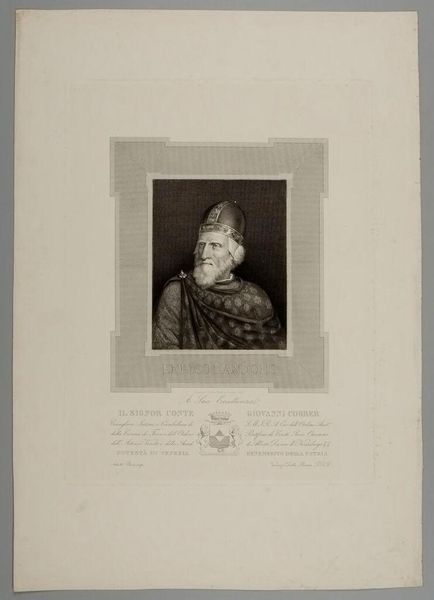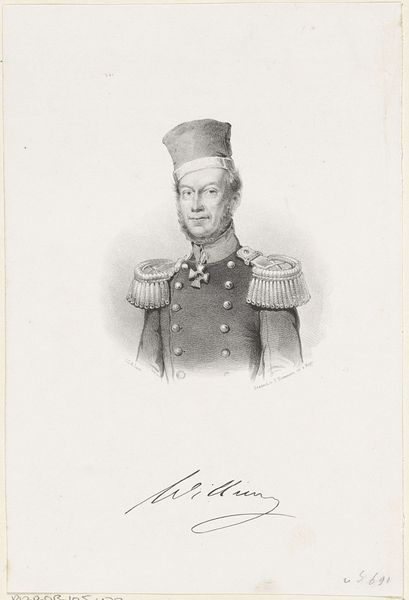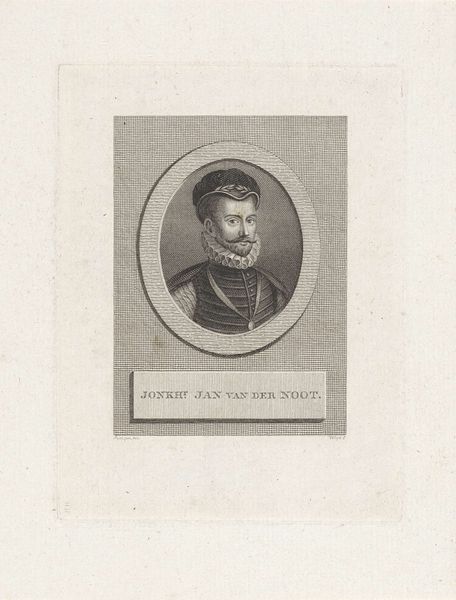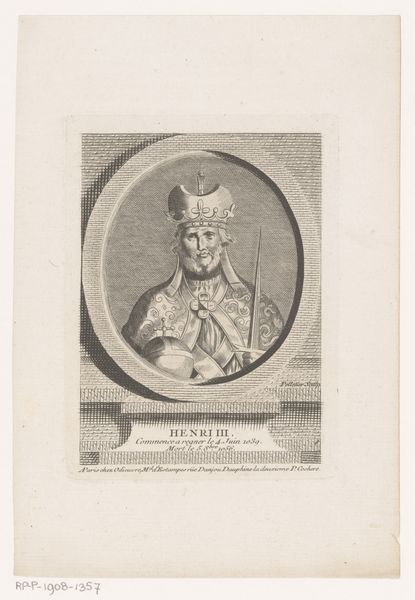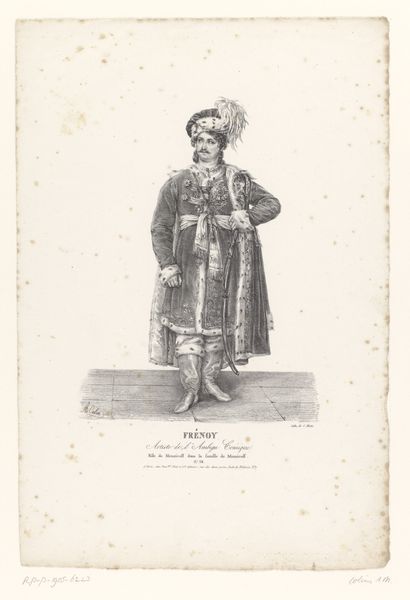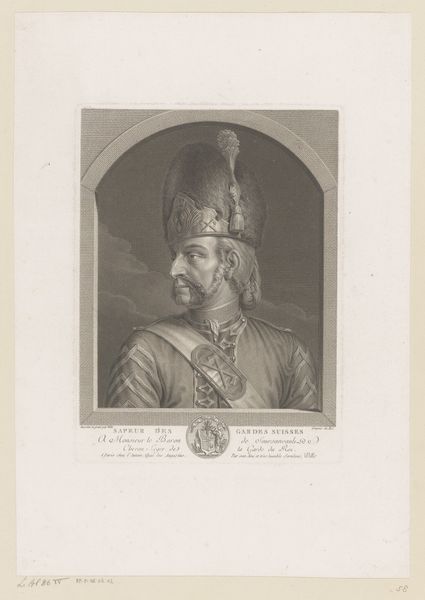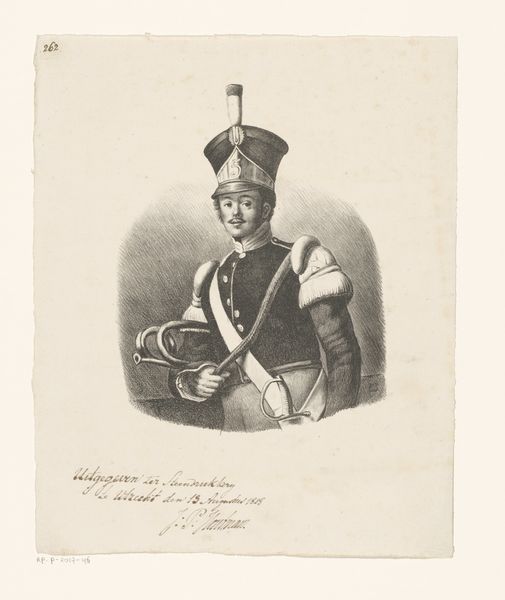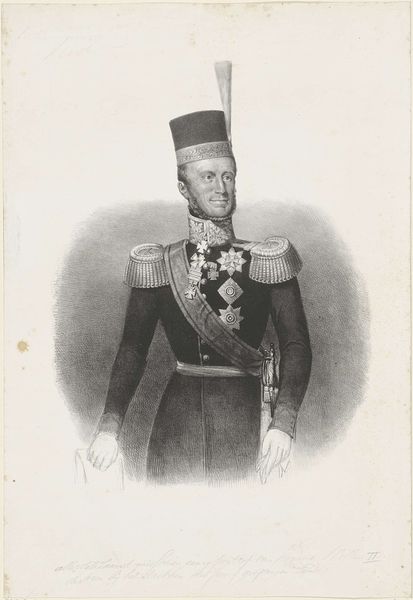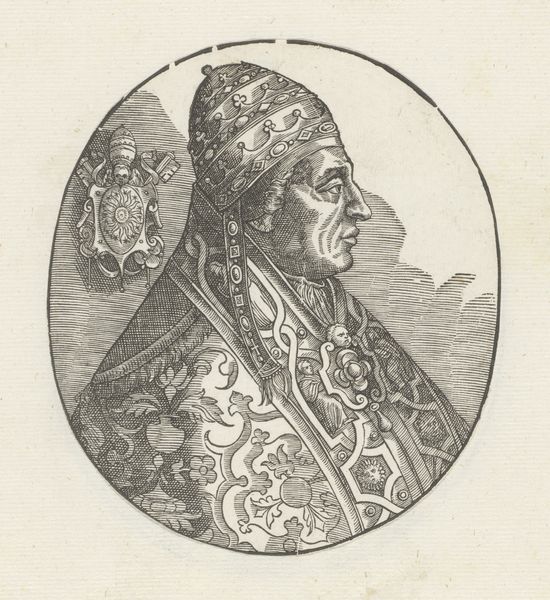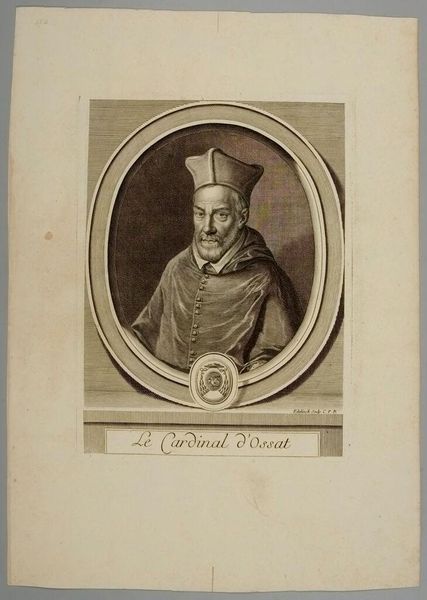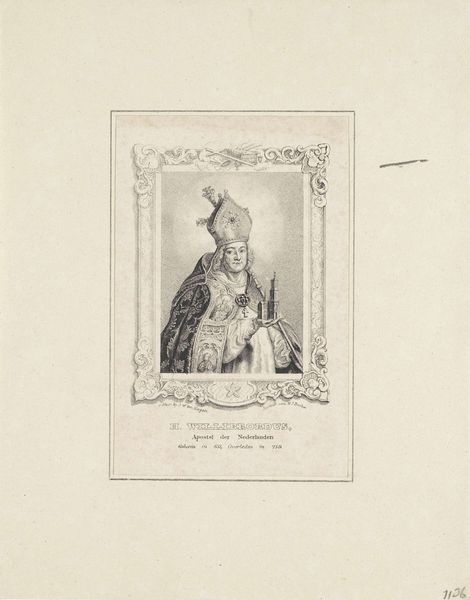
drawing, pencil
#
portrait
#
pencil drawn
#
drawing
#
pencil sketch
#
old engraving style
#
charcoal drawing
#
pencil drawing
#
pencil
#
pencil work
#
history-painting
#
academic-art
#
realism
Dimensions: height 269 mm, width 177 mm
Copyright: Rijks Museum: Open Domain
Editor: So, this is a pencil drawing titled "Portrait of Filippo Maria Visconti, Duke of Milan," dating from around 1855-1865, and made by Francesco Clerici. I'm struck by the detail in the clothing compared to the face. What catches your eye? Curator: Well, first, I notice it's a drawing made in pencil, a relatively accessible and mass-produced material even back then. Consider the labor involved: the repetitive, almost meditative act of hatching lines to build up form and texture. It's a mechanical process employed to depict an aristocrat. Doesn’t this speak to the democratization of image-making happening at that time? Editor: Democratization through material, interesting. But wouldn't an engraving also be reproducible? Why the focus on pencil? Curator: Precisely! The *choice* of pencil elevates the *act* of drawing, traditionally preparatory, to a finished art form. Furthermore, the detailed depiction of his garments – that elaborate brocade, the fur trim – all emphasize Visconti’s wealth and status, rendered accessible to the masses through this easily disseminated medium. Are we celebrating the Duke or examining his representation? Editor: So, the very materials challenge the power dynamic inherent in portraiture itself? It's not just *who* is portrayed but *how*, and with *what*. I’m starting to see how subversive this seemingly traditional portrait might be. Curator: Indeed. The contrast between the expensive garments meticulously rendered, versus the more simply-drawn face invites us to examine the power of the materials used to convey both status, and the means through which they are available for consumption and understanding. Editor: I didn't initially think of the artistic process in challenging the portrait. I'll definitely look at materiality in other pieces. Thanks for the new perspective! Curator: My pleasure. Remember to always consider the inherent properties and social implications tied to the physical stuff that makes art possible.
Comments
No comments
Be the first to comment and join the conversation on the ultimate creative platform.
